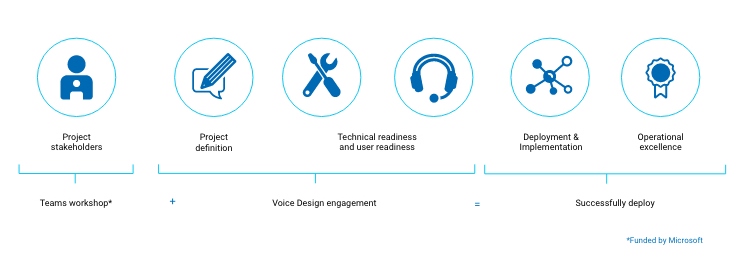-
Featured services
Think beyond the robots
The successful integration of AI and IoT in manufacturing will depend on effective change management, upskilling and rethinking business models.
Read the blog -
Services
View all services and productsLeverage our capabilities to accelerate your business transformation.
-
Services
Network Services
-
Services
Cloud
-
Services
Consulting
-
-
Services
Data and Artificial Intelligence
- AI and Intelligent Solutions
- Data/AI Strategy and Program
- Data Engineering and Platforms
- Data Governance and Management
- Data Visualization and Business Decision
- GenAI Consulting
- GenAI Platforms
- GenAI Industry Services
- GenAI Infrastructure Services
- GenAI Value Transformation
- View Data and Artificial Intelligence
-
Services
Technology Solutions
-
Services
Global Data Centers
-
Services
CX and Digital Products
-
Services
Application Services
-
Services
Sustainability Services
-
Services
Digital Workplace
-
Services
Business Process Services
-
Services
Generative AI
-
Services
Cybersecurity
-
Services
Enterprise Application Platforms

Accelerate outcomes with agentic AI
Optimize workflows and get results with NTT DATA's Smart AI AgentTM Ecosystem
Create your roadmap -
-
-
Insights
Recent Insights
-
The Future of Networking in 2025 and Beyond
-
Using the cloud to cut costs needs the right approach
When organizations focus on transformation, a move to the cloud can deliver cost savings – but they often need expert advice to help them along their journey
-
Make zero trust security work for your organization
Make zero trust security work for your organization across hybrid work environments.
-
-

Master your GenAI destiny
We’ll help you navigate the complexities and opportunities of GenAI.
Explore GenAI -
-
Master your GenAI destiny
We’ll help you navigate the complexities and opportunities of GenAI.
Explore GenAI -
Discover how we accelerate your business transformation
-
About us
CLIENT STORIES
-
Liantis
Over time, Liantis – an established HR company in Belgium – had built up data islands and isolated solutions as part of their legacy system.
-
Randstad
We ensured that Randstad’s migration to Genesys Cloud CX had no impact on availability, ensuring an exceptional user experience for clients and talent.
-
-
CLIENT STORIES
-
Liantis
Over time, Liantis – an established HR company in Belgium – had built up data islands and isolated solutions as part of their legacy system.
-
Randstad
We ensured that Randstad’s migration to Genesys Cloud CX had no impact on availability, ensuring an exceptional user experience for clients and talent.
-

Everest Group PEAK Matrix® Assessment
NTT DATA is a Leader and Star Performer in the Everest Group Sustainability Enablement Technology Services PEAK Matrix® Assessment 2024.
Get the Everest report -
- Careers
How to ensure the successful adoption of Microsoft Teams
24 May 2021

Topics in this article
While Microsoft Teams is mature, credible and ready to be the hub for your organization’s teamwork; there are some challenges that we – as cloud communications experts – continue to encounter. These apply to businesses adapting to new ways of working and those wanting to enable employees to work remotely and productively.
I’ll also give a couple of real-world examples of common pitfalls we often see in our client work. In particular, I’ll focus on problems caused by a lack of understanding how Teams fundamentally changes how people collaborate and communicate.
Microsoft Teams is not a like-for-like replacement for Skype for Business
In part, this is because some clients underestimate what a transition to Microsoft Teams will mean. They view it as simply ‘the Skype replacement’. To be fair this is how Microsoft first talked about it when they launched Teams. As such, it’s unsurprising that this is what a lot of people took on board.
But although Microsoft Teams replaces Skype, it is not a like-for-like replacement. It goes way beyond this, changing the way people communicate, collaborate and how they can be productive.
While it’s vital to understand all the ways Teams can empower your workforce, for a successful Teams adoption Teams, you also need to understand your organization’s culture, and people’s willingness to change. Only then can you look to ensure your end users fully understand the potential of the technology and maximize their use of these new solutions.
Let’s look at two real-world examples to understand the importance of the people side of things.
Example One: No change management program
‘Client A’ is a global telecoms organization, established in around 30 countries. It’s a mid-sized company with around 1,000 employees. They already had extensive Microsoft knowledge and were immersed in the Microsoft 365 suite. They also had Skype for Business – and before this, OCS (Office Communications Server). What’s more, they were using Exchange, SharePoint, Yammer, etc., and had a good experience using the whole Office 365 stack. The idea was simply to transition from Skype for Business on-premises to Microsoft Teams with voice.
On the face of it, they were well placed. They’d lots of previous technical workaround Skype. What’s more, they’d already done most of the ‘being ready’ technical work. The network was also ready. They had everything necessary to cope with video streams, heavy video usage, meetings and so on. They were also prepared for the roll-out of Teams – because when you have Office 365 you can relatively easily transition. And their IT Support was up to speed too. I might argue that they were not perfectly trained, but they certainly had enough knowledge to start the project.
So overall, things seemed well set for the successful adoption of Microsoft Teams.
A recipe for confusion and chaos
What you must realize, however, is that in Microsoft Teams, you don’t really have a central control panel. You can’t see if someone else – even in your team or division – has created another team on the same subject. Without any governance or best-practice guidelines to avoid this, it can be a recipe for confusion and chaos. Things can – and in this case did – start to get quite messy.
As the rollout happened, Client A’s employees were left to fend for themselves. After just a few weeks, there were numerous similar-sounding teams with similar groups of people. There were huge overlaps but also gaps too. People who didn’t necessarily know what already existed, might create new groups. Some people created teams as a one-off – to send files to others – but then never used them again. Elsewhere, people created teams that were later abandoned as others adopted similar teams, or ones they preferred, for a specific topic.
Overall, it became a bloated deployment with many different teams all over the place, many with very little actual usage. Worse than that, it was starting to become difficult for people to find the information they needed, and productivity was falling.
Adoption by end-users is vital
That’s the point at which we came in; to help with change management and adoption. By now, of course, the client understood that Teams was very different from Skype, and that they needed help to improve end-user behaviour and give best-practice guidance on what-to-do and what-not-to-do.
The key is always to establish some governance. And the way to do this is to anticipate the impact on end users of the introduction of Teams. It involves a technology change but, first and foremost, you should consider it as a change in philosophy. It’s all about a change in behaviour within your organization. In doing so, you can take steps to reduce confusion, increase adoption and ensure you get the productivity you intended.
This is why it’s so important to involve your broader business stakeholders – not just the IT stakeholders – right from the beginning. They’ll be in a better position to know what challenges their end-users may face. And through this they’ll know what pitfalls may face them in moving to something that is completely unified and very different.
Example Two: a lack of advance training
I’ll turn now to another common pitfall, again using a real-world example. I’m relieved to report that this was not a client of ours, but an example our partner Microsoft shared with us.
‘Client B’ is a very large organization and with a large number of physical sites and a diverse set of end-user profiles in a wide range of roles. They wanted to retire all their old PBXs and to bring everyone into the new communications system. As is common, moving from an old telephony system, the client was using Microsoft Teams, aligning employees by roles, departments and projects.
Given the diversity of end-users, they had identified sponsors in each user group. All were highly visible and very engaged in the project. In addition, the client had run local IT training.
No governance guidelines
However, as in the earlier example, Client B chose not to run a change management program and, in this case, soon ran into a problem arising from not having created governance guidelines and suitable training.
The consequences of this were most noticeably felt the finance department. The team didn’t know how to restrict confidential files, and soon enough someone in the finance team shared a file containing all staff salaries and accidentally made it freely discoverable.
Now, since anyone could potentially find it and access it, the inevitable happened, and someone soon did exactly that. As you can imagine, people shared it much, much wider; causing much amusement, consternation and embarrassment, depending on who you were.
Of course, once information is out there, you can’t get it back. So, on top of getting on top of adoption and change management; behaviour, good governance and end users good training on creating, storing, and sharing information is critical.
You need to do this before any roll-out, so that everything is clear in advance: governance, naming conventions and user access, before you then go into the rollout phase. You can’t undo these kinds of mistakes.
Successful adoption of Microsoft Teams is about people – not just technology
Implementing high-value intelligent communication tools, such as Microsoft Teams, is a great technological move to increase productivity and drive efficiency within the business. However, success strongly depends on understanding your users and building the right governance and training around their needs. It’s critical to embed change into every single corner of your business during the transformation.
Implementing a new tool isn’t just about the technology, but all about the people who will use it.
Take the next step toward Microsoft Teams
No matter where you are today, it’s time to take the step away from Skype and towards Microsoft Teams.
As Microsoft’s 2019/2020 Intelligent Communications Partner of the Year, there’s no one better than us to help you transform your business. We combine our many years of experience with Microsoft’s proven migration framework to ensure a smooth and seamless rollout every step of the way.
Our end-to-end approach

We understand the challenges organizations face when setting out on the journey to the cloud. That’s why we offers a simple, proactive support and care package that lets us take care of the operation of your Microsoft environment, from incident management to service requests and customer success. By letting us handle the operational load, you can focus on those that matter in your business.
Contact us to find out more about how we can help your organization.

